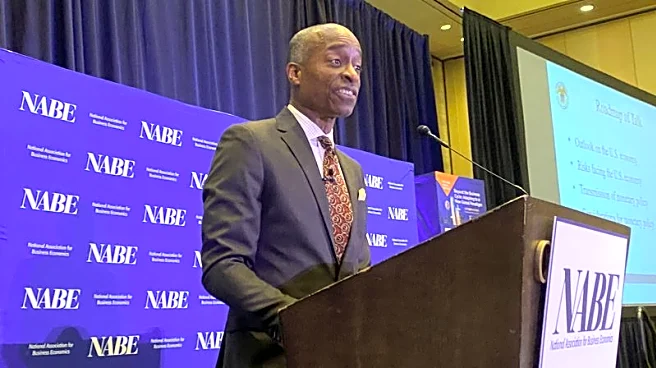What's Happening?
Stephen Miran, recently appointed by President Trump to the Federal Reserve's Board of Governors, is advocating for more aggressive interest rate cuts than those currently being implemented by the Fed.
Miran has dissented from recent decisions to lower rates by a quarter point, instead supporting a half-point cut. His views, which align with Trump's economic policies, suggest that borrowing costs are exerting more pressure on the economy than widely acknowledged, and he predicts substantial disinflation. Miran's stance is controversial, with some economists questioning the inputs of his economic modeling.
Why It's Important?
Miran's approach could significantly impact U.S. monetary policy, potentially leading to lower borrowing costs and influencing inflation rates. His views challenge the consensus among Fed officials, which could lead to shifts in economic strategy. If Miran's predictions of disinflation and the effects of Trump's policies prove accurate, it could reshape economic forecasts and policy decisions. However, skepticism from economists and Fed colleagues suggests that Miran's influence may face resistance, affecting the pace and direction of future rate adjustments.
What's Next?
The ongoing debate over interest rate cuts and economic modeling inputs will likely continue, with Miran's views being scrutinized by both economists and Fed officials. Future Fed meetings will reveal whether Miran's perspective gains traction or remains a minority view. The potential impacts of Trump's policies on the economy, including tariffs and immigration, will be closely monitored to assess their influence on inflation and interest rates.
Beyond the Headlines
Miran's appointment and views highlight the intersection of politics and economic policy, raising questions about the influence of presidential agendas on independent institutions like the Fed. The debate over interest rates also underscores broader discussions about economic modeling and the assumptions that drive policy decisions.












